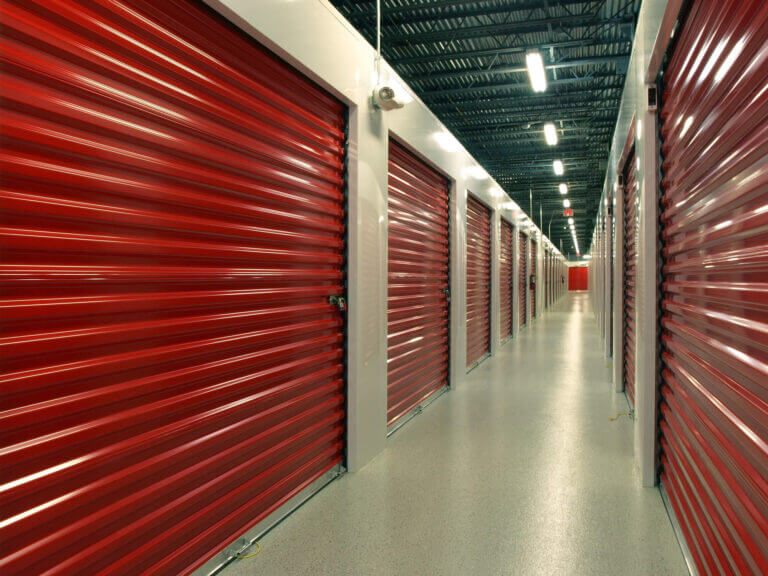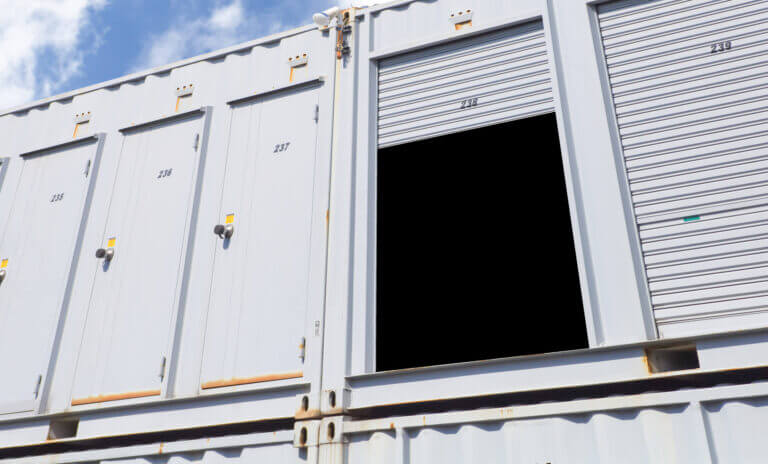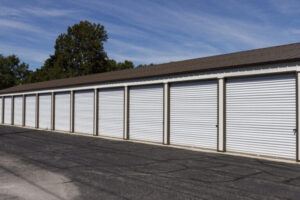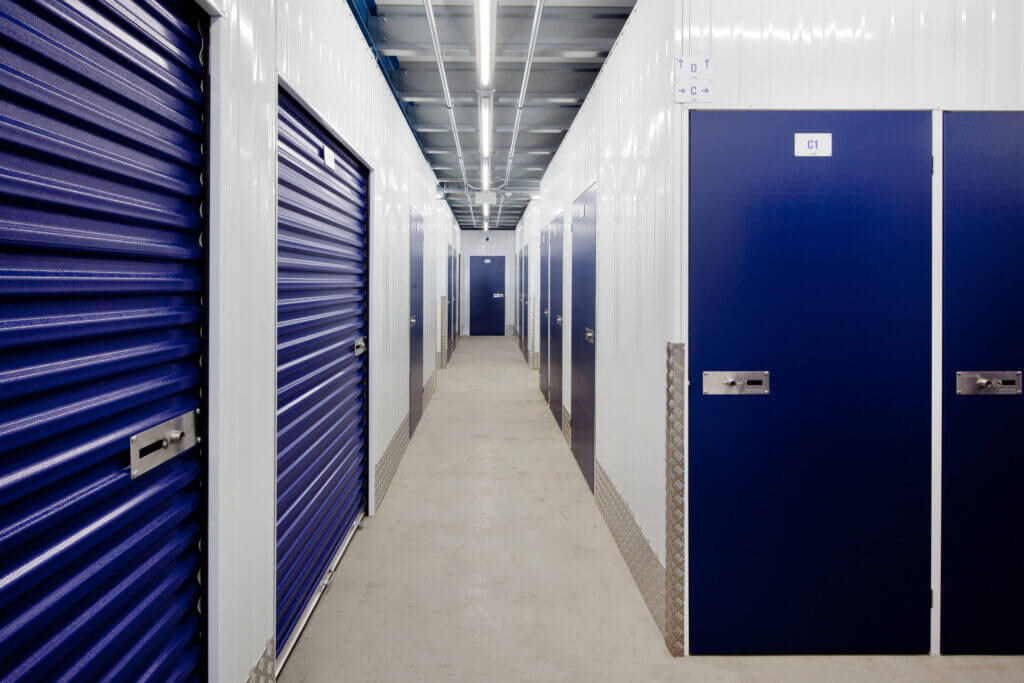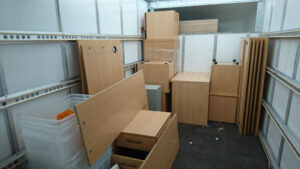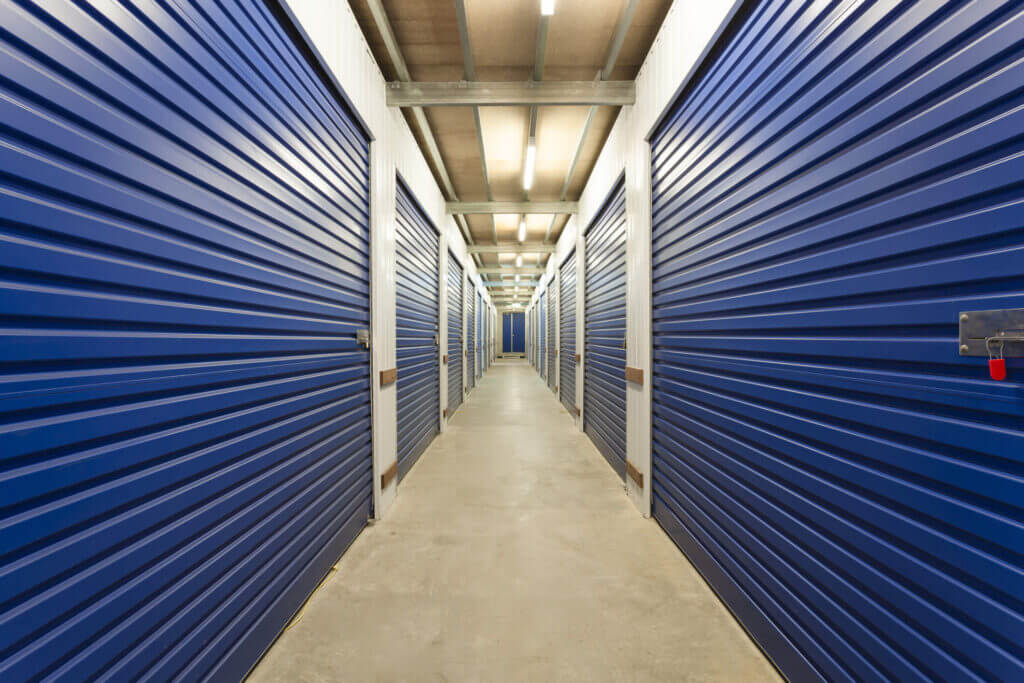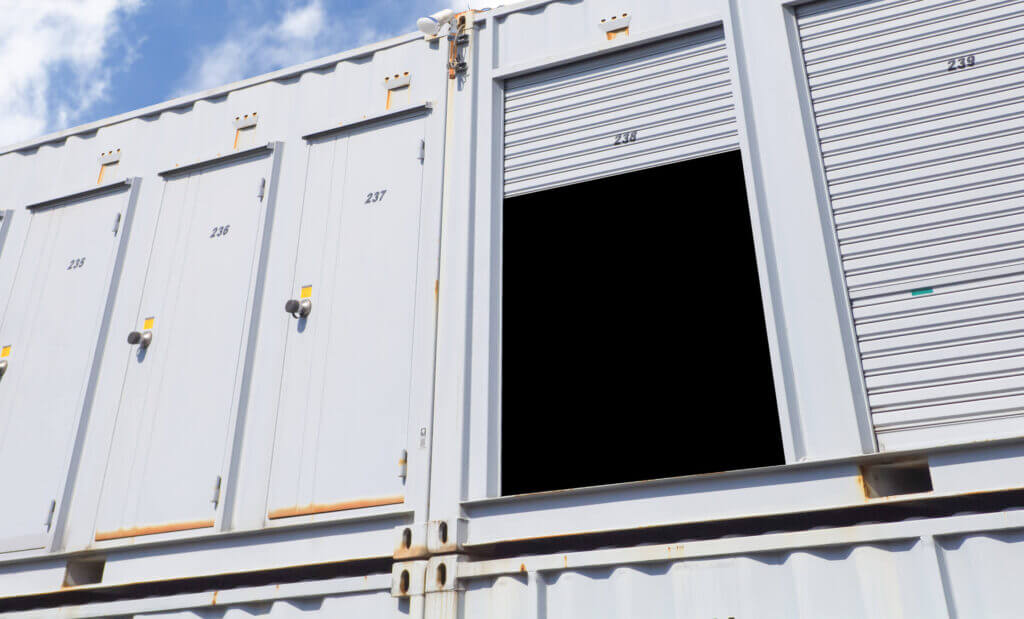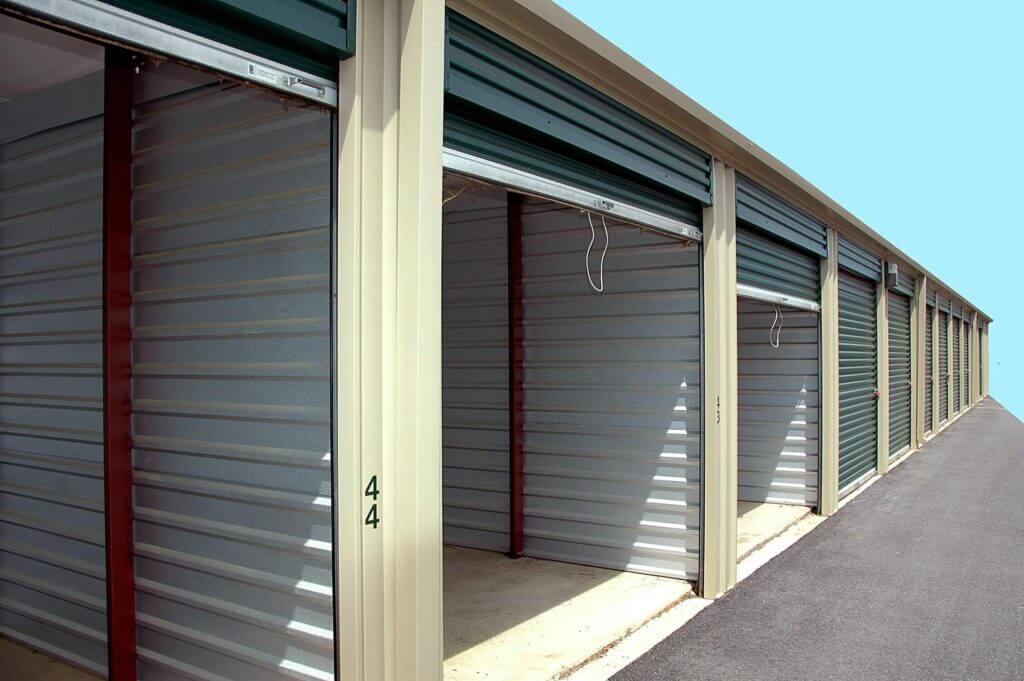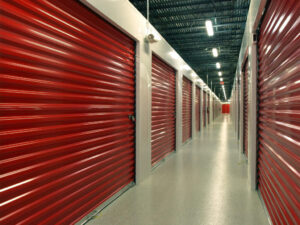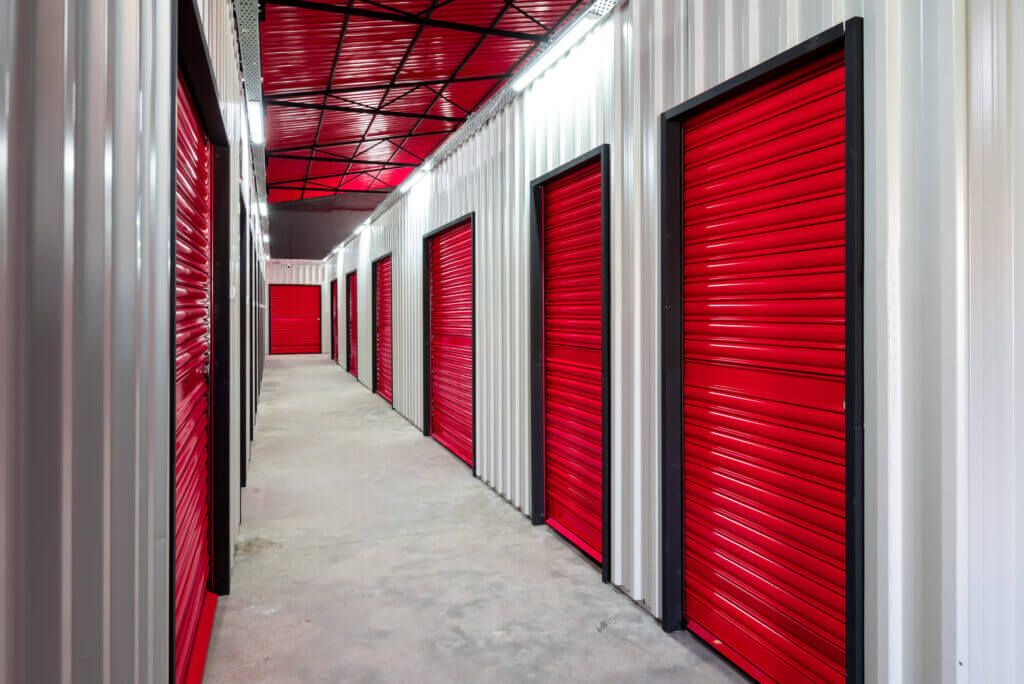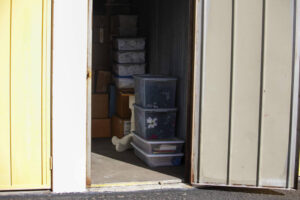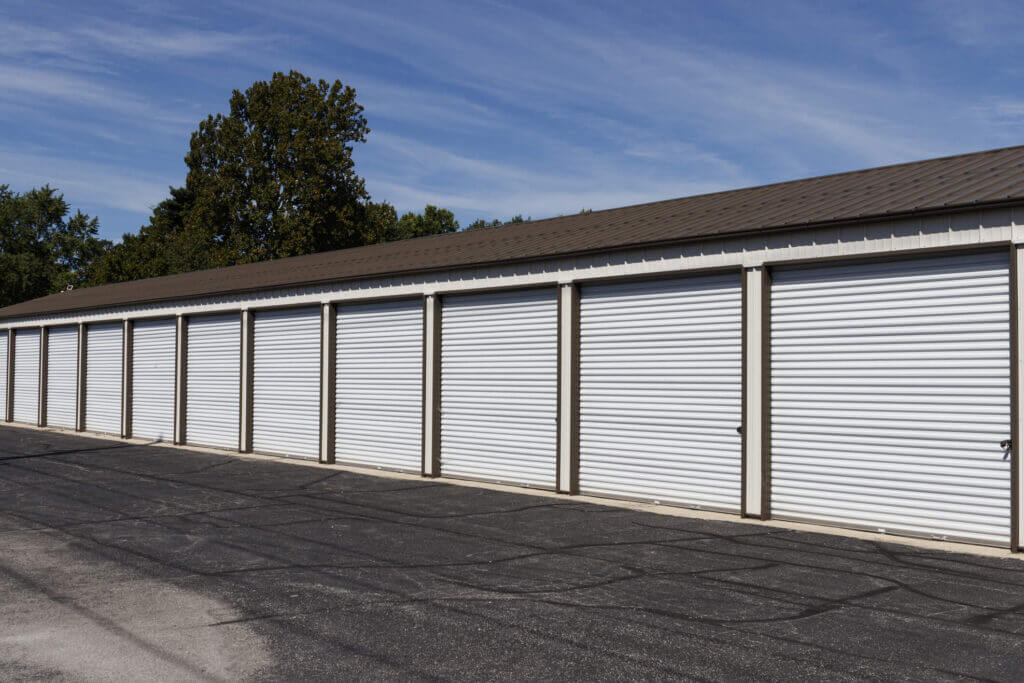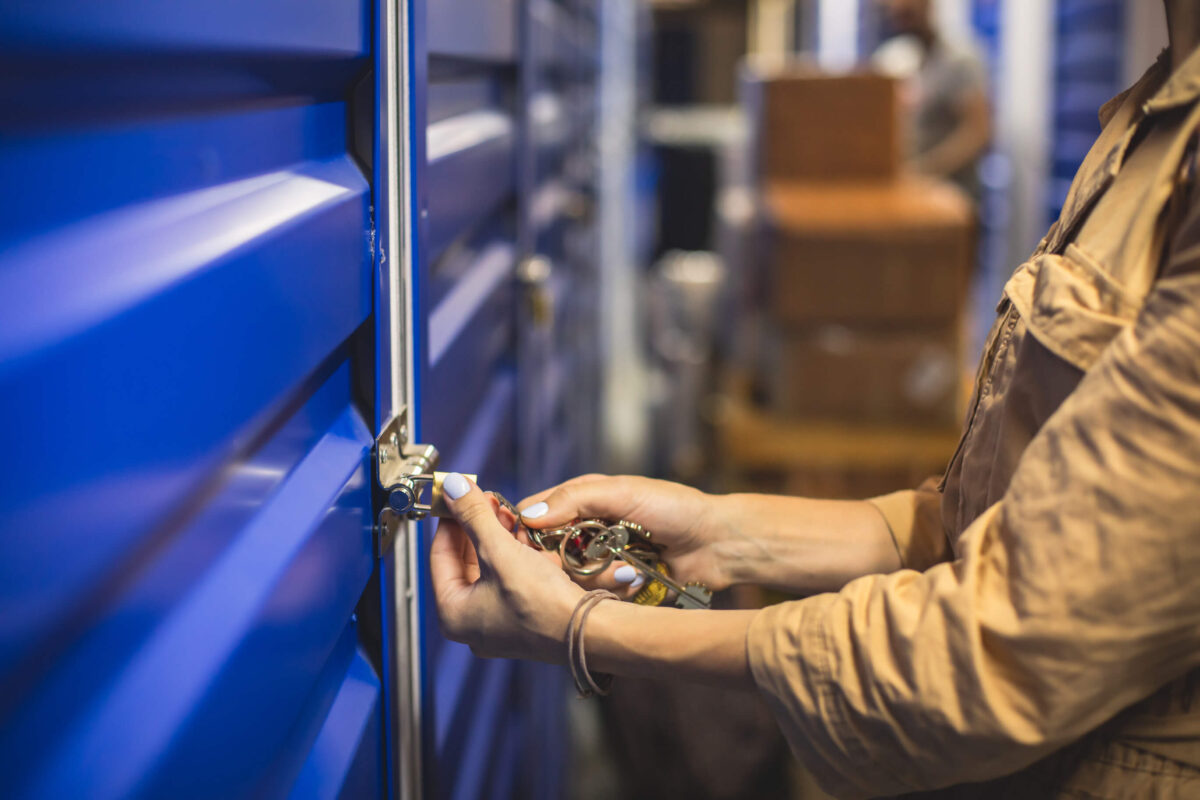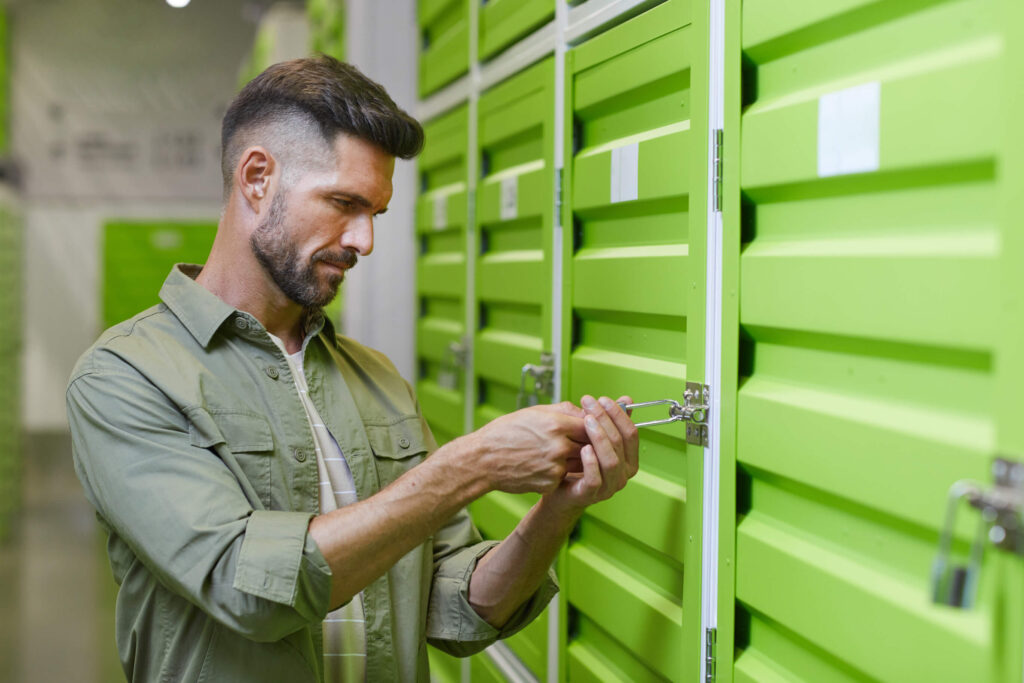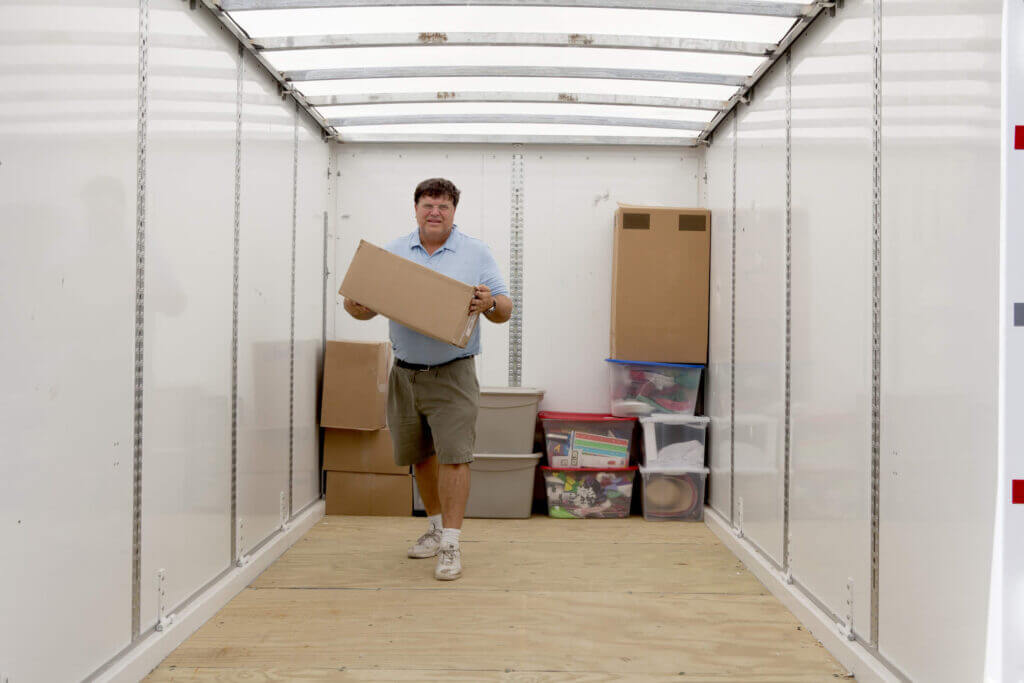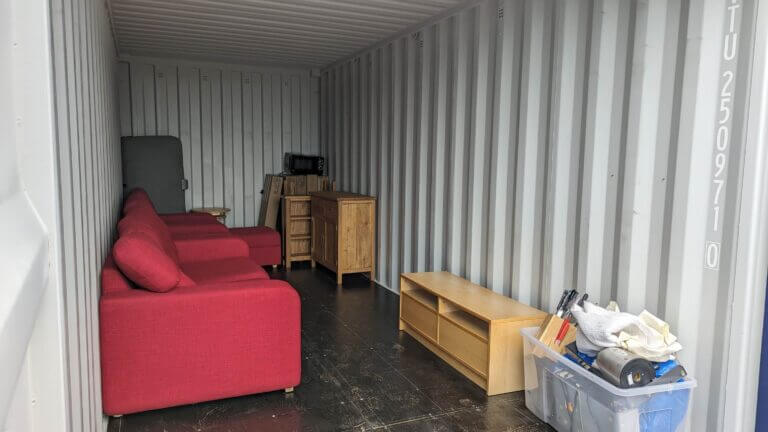A 10×20 storage unit is a popular choice for those who require additional storage space. However, it is crucial to ascertain the precise dimensions of this unit and comprehend its capacity before renting. This guide will assist you in determining whether a 10×20 storage unit is the appropriate capacity for your storage requirements.
Understanding the Dimensions: 10 Feet by 20 Feet
A 10×20 storage unit provides 200 square feet of floor space, with dimensions of 10 feet in width and 20 feet in depth. That is approximately the extent of a typical one-car garage. Most units have a ceiling height of 8 to 10 feet, providing ample vertical space for stacking crates or more oversized items.
Which Items Can Be Stored in a 10×20 Storage Unit?
A 10×20 storage unit is capable of accommodating a significant amount of items. Here are a few typical scenarios to assist you in visualizing:
Furniture for a Three- to Four-Bedroom Residence
Furniture and appliances for an entire household can be accommodated within a 10×20 unit. It is possible to accommodate items such as:
- Coffee tables, couches, and chairs
- The bedroom suites consist of nightstands, dressers, and beds.
- Major appliances, including refrigerators, washers, and dryers
- Tables and chairs for the dining room
Automobiles
A 10×20 unit conveniently stores most sedans, light trucks, motorcycles, and other vehicles. It is an excellent choice for those who require storage for a motorcycle or automobile during the off-season.
Office and Business Supplies
Do you require warehousing for your business? A 10×20 unit can accommodate it. It is possible to store:
- Desks, filing cabinets, and chairs comprise office furnishings.
- Product supply and inventory
- Boxes containing critical documents or papers
Tools or Outdoor Equipment
Do you own outdoor equipment such as bicycles, snowblowers, or lawnmowers? A 10×20 unit can conveniently accommodate these items and seasonal items like patio furniture.
Comparing 10×20 Storage Units to Other Sizes
Comprehending the distinctions between measurements is essential to determine the most suitable storage unit for your requirements. A 10×20 storage unit is one of the more extensive options available. However, how does it compare to other popular sizes? The following is a comparison to assist you in making an informed decision.
5×5 Storage Unit: Compact Yet Powerful
Size: 5 feet by 5 feet (25 square feet)
Size Comparison: A compact walk-in wardrobe
What It Fits
- Small furniture items, such as a bureau or chair
- Decorated for the season
- Boxes containing personal items, literature, or office supplies
Ideal for:
- College students who require summer storage
- Organizing small seasonal objects, such as winter clothing or holiday décor
A 5×5 storage unit is ideal for individuals with minimal storage requirements, providing sufficient space for a few cartons and smaller items.
5×10 Storage Unit: Ideal for Personal Items
Size: 5 feet by 10 feet (50 square feet)
Size Comparison: Ample walk-in wardrobe
What it is suitable for:
- Furniture from a studio or one-bedroom apartment, including a mattress, sofa, and small appliances.
- Small sporting equipment, tools, or bicycles
- Boxes containing personal or office objects
Ideal for:
- Transporting furniture from a compact apartment or dormitory
- Storage temporarily during a relocation
A 5×10 unit provides twice the space of a 5×5 unit, sufficient space for a small apartment’s worth of personal objects and furniture.
A Balanced Mid-Size Storage Unit: The 10×10 Storage Unit
Dimensions: 100 square feet (10 feet by 10 feet)
Size Comparison: One-half of a single-car carport
What it is suitable for:
- Appliances and furniture from a one- to two-bedroom apartment
- Mattresses, couches, and dining room tables are among the bulky objects.
- Miscellaneous household objects and boxes
Best suited:
- Best suited for storing the contents of a tiny home or apartment during a move or renovation
- Additional storage capacity for businesses
A 10×10 storage unit is a versatile dimension that provides ample space for more oversized household items while still allowing for the storage of boxes or other personal belongings.
More Flexibility, More Space: The 10×15 Storage Unit
Size: 150 square feet (ten feet by fifteen feet)
Comparative Dimensions: Two-thirds of a single-car carport
What it is suitable for:
- Belongings and furniture from a two-bedroom residence
- Major appliances, including refrigerators, washers, and dryers
- Room for crates and additional smaller items
Ideal for:
- Storing possessions from a mid-sized residence
- Business equipment or inventory that is larger
A 10×15 unit is optimal for households with additional furniture or small businesses seeking to store inventory, as it provides greater flexibility for more extensive storage requirements.
Maximum Storage Capacity for Large Requirements: 10×20 Storage Unit
Size: 200 square feet (10 feet by 20 feet)
Size Comparison: A typical carport that accommodates one vehicle
What it is suitable for:
- Appliances and furniture from a three- to four-bedroom residence
- Vehicles, including automobiles and lorries
- Extensive tools, business apparatus, or entire office setups
Ideal for:
- Storing the contents of a larger residence
- Vehicle Shelter
- Businesses require long-term storage.
One of the most common storage options is a 10×20 unit, which provides sufficient space for larger households or individuals who require vehicle storage. It is an ideal solution for moving, downsizing, or requiring a centralized storage facility for various items, including vehicles and furniture.
The Ultimate Storage Solution: The 10×30 Storage Unit
Size: 300 square feet (10 feet by 30 feet)
Size Comparison: One-car carport that is excessively large
What it is suitable for:
- Furniture and numerous appliances comprise the contents of a substantial residence.
- A variety of vehicles, including motorcycles, small boats, and automobiles
- Business inventory, apparatus, or substantial equipment
Optimal for:
- Families with substantial residences or multiple vehicles
- Businesses with substantial inventory or equipment require long-term storage.
A 10×30 storage unit is the most spacious option, making it the optimal choice for individuals with extensive property or business inventory and those who require long-term storage.
The Primary Distinctions Between Storage Sizes
- Small Units (5×5, 5×10) are ideal for personal items, seasonal possessions, or minimal storage requirements.
- Mid-Sized Units (10×10, 10×15): These are ideal for small—to mid-sized residences, apartments, or businesses.
- Large units (10×20, 10×30) are optimal for long-term business storage, vehicles, and large residences.
Ideal Uses for a 10×20 Storage Unit
A storage unit that measures 10 feet by 20 feet is an excellent choice for individuals with substantial storage requirements. It provides 200 square feet of space, which is approximately equivalent to the size of a standard one-car garage. Its versatility and dimensions render it appropriate for a diverse array of applications. A 10×20 storage unit is well-suited for various purposes, including vehicle storage, business operations, and relocation.
Storage of Furniture and Personal Property from a Large Residence
The contents of a multi-bedroom residence are one of the most prevalent applications for a 10×20 storage unit. This measurement is optimal for individuals who:
- You are in the process of relocating and require transient storage for your entire household.
- Although you are downsizing, you wish to retain more oversized furniture and possessions.
- You require a location to store your furniture securely while remodeling your residence.
A 10×20 unit can effortlessly accommodate:
- Bedroom suites, which encompass nightstands, dressers, and beds
- Coffee tables, sectionals, and couches
- Large appliances, including refrigerators, microwaves, washers, and dryers
- Outdoor furniture, dining room tables, and chairs
Storage for Vehicles
A 10×20 unit is an exceptional choice for long-term or seasonal vehicle storage. This unit has ample capacity and can accommodate:
- Automobiles (sedans, coupes, and compact vehicles)
- Motorbikes
- Jet skis and other miniature recreational vehicles
During the off-season, storing your vehicle in a 10×20 unit protects it from the elements, theft, and damage.
Inventory and Equipment of the Business
A 10×20 storage unit is frequently considered a cost-effective solution for small business owners who need to store excess inventory, equipment, or office supplies. This unit can assist in maintaining your business’s organization, whether you operate an e-commerce store or require additional space for tools and materials.
- Retail and e-commerce: Seasonal inventory, transportation supplies, and store products
- Contractors and tradespeople: Maintain extensive tools, building materials, and equipment.
- Office Equipment: During office transfers or expansions, desks, filing cabinets, chairs, and computers must be stored.
If you still need to be prepared to allocate additional warehouse or office space, employing a storage unit for business is particularly advantageous.
The Storage of Large Collections
A 10×20 unit is an ideal choice for hobbyists or collectors who require additional storage space for their collections, whether it is for:
- Antiques, such as furniture or vintage objects
- Art collections necessitate appropriate storage
- Sports equipment, including bicycles, skis, and golf clubs
- Musical instruments, such as pianos or large speakers
You can maintain the safety and organization of your valuable collections in a spacious area without causing congestion in your home.
Temporary Storage for Military Personnel or Students
A 10×20 unit provides sufficient space to store personal possessions until they are required again, making it an ideal choice for college students between semesters or military personnel deployed for extended periods.
- College Students: College students should store personal possessions, furniture, and dorm room items during summer break or a gap year.
- Military Personnel: Securely store household products and vehicles during deployment to ensure their protection until your return.
Storage of Outdoor and Seasonal Equipment
A 10×20 storage unit is ideal for those with seasonal or sizable outdoor equipment occupying excessive space in their residence or garage. It is possible to store:
- Mowers, trimmers, and snowblowers comprise lawn equipment.
- Patio furniture is utilized during winter.
- When they are not in use, boats, and ATVs (depending on their capacity)
- Sporting equipment, bicycles, and camping supplies during the off-season
This conserves space in the household and ensures that all items are secure until they are required again.
Estate and Long-Term Storage
A 10×20 unit can accommodate many items while maintaining order, making it an ideal choice for long-term storage or estate management. It is possible to store:
- Personal possessions and furniture inherited from estate family heirlooms require a secure, climate-controlled environment.
- Long-term storage for items that are not in daily use but have yet to be ready to be sold. This is an excellent choice if you require the time to sift through many belongings without feeling compelled to act quickly.
How to Optimize the Space in a 10×20 Storage Unit
Follow these guidelines for optimal storage efficiency to optimize your 10×20 storage unit:
- Stack Smartly: Sturdy, stackable crates should be put in and stacked on the ceiling if necessary. Ensure that the boxes are plainly labeled to facilitate easy access.
- Furniture disassembly: Disassembling large items such as mattresses and tables can maximize the available space.
- Develop pathways: Allow walkways to facilitate the effortless retrieval of items located at the rear of the unit without removing everything.
- Organize Smaller Items Vertically: Portable shelving can facilitate the search for necessary items vertically.
Climate Control Options
A climate-controlled storage unit is essential for safeguarding sensitive or valuable items from moisture, humidity, and temperature fluctuations. A 10×20 storage unit with climate control provides an optimal combination of environmental protection and dimensions. Let us investigate the definition of climate control, the assets it safeguards, and the circumstances under which it should be implemented for storage requirements.
What is the definition of climate control?
Climate-controlled storage facilities maintain consistent humidity and temperature throughout the year. These devices are typically maintained at a temperature between 55°F and 80°F (13°C to 27°C), and humidity is controlled to prevent the accumulation of excess moisture, which can result in the growth of mold and mildew. In contrast to conventional storage units, the benefits of climate-controlled units is to protect themselves from extreme weather conditions, such as heat, cold, and moisture.
What does climate control safeguard?
Climate control is optimal for storing items susceptible to humidity or extreme temperature fluctuations. This additional safeguarding is advantageous for particular possessions, including:
- Wooden Furniture: Due to temperature fluctuations, wood may become warped, cracked, or divided. A stable environment maintains the structural integrity of the timber.
- Electronics: High humidity and temperature fluctuations can damage the internal components of computers, televisions, and other electronic devices.
- Appliances: In an environment that is not climate-controlled, the electrical and metal components of refrigerators, washers, and dryers may corrode or degrade.
- Paper and Documents: Books, essential papers, and photographs are susceptible to yellowing, fading, or becoming brittle in excessive heat or humidity.
- Artwork and antiquities: Humidity, mold, or temperature fluctuations can cause paintings, sculptures, and other antiquities to depreciate or lose value.
- Musical Instruments: Humidity or heat can cause warping, splitting, or detuning in guitars, pianos, and other instruments.
- Clothing and Fabrics: High humidity can cause fungi to develop in fabrics, while heat can cause discoloration.
In which circumstances should climate control be implemented?
Numerous variables influence the selection of a climate-controlled 10×20 storage unit. In the following situations, it is particularly advantageous:
Severe weather conditions
Climate control is a wise investment if you reside in an area with extreme seasonal temperatures, such as sweltering summers or frigid winters. For instance, regions with high humidity or rainfall seasons, such as coastal regions, can accumulate moisture within a conventional storage unit.
Long-Term Storage of Items
Climate control provides superior long-term protection for objects intended to be stored for an extended period, such as months or years. The likelihood of temperature or humidity damage to your possessions increases as they remain in storage for an extended period.
Storing Sentimental or Valuable Items
Protecting priceless family heirlooms, expensive electronics, or essential documents is warranted. Climate control facilitates the preservation of the condition of your most valuable and irreplaceable items.
Items that are susceptible to moisture and heat
The controlled environment prevents harm when storing electronics, wooden furniture, musical instruments, or artwork.
Advantages of Climate-Controlled Storage
- Prevents Warping and Cracking: Maintaining consistent temperatures prevents delicate items like wood furniture and instruments from warping or cracking.
- Reduces the Risk of Mold and Mildew Growth: Maintaining proper humidity levels prevents the growth of mold and mildew, which can destroy stored furniture, paper, and fabrics.
- Enhances Air Quality: Climate-controlled units frequently feature improved ventilation, which reduces particulate accumulation and enhances the air quality within the unit.
- Enhances Confidence: Knowing that your possessions are safeguarded from environmental influences enables you to store them confidently, particularly for extended periods.
Is climate control always necessary?
Not all items require climate control. A standard 10×20 unit may be adequate for storing durable outdoor equipment, metal tools, or less sensitive items such as plastic containers or patio furniture. If you are still determining whether your possessions require climate control, it is always advisable to exercise caution when handling valuables.
Accessibility Features
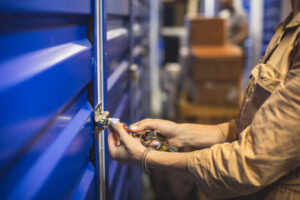
It is essential to consider a storage unit’s accessibility when selecting it, particularly for individuals who require frequent access to their possessions or have specific physical requirements. A 10×20 storage unit may be equipped with various accessibility features to enhance the user experience and make it more convenient. Here is a summary of the primary accessibility features when selecting a storage unit.
Access via a drive-up
Drive-up access is one of the most desired features for extensive storage facilities, such as the 10×20. This feature enables you to park your vehicle directly in front of your unit, simplifying the process of loading and unloading large or bulky items.
- Convenience: Drive-up access eliminates the need to transport items through hallways or elevators, saving time and effort.
- Ideal For: Suitable for transporting weighty business inventory, appliances, or large furniture that necessitates frequent access.
Hallways and Doors with a Wide Opening
If your 10×20 unit is indoors, the facility must provide wide doors and corridors to ensure the ease of movement of large items or individuals using mobility aids such as wheelchairs or walkers.
- Standard Roll-Up Doors: Roll-up doors are a standard feature of most 10×20 units. They offer a comprehensive, unobstructed opening typically 8–9 feet wide. This facilitates the effortless movement of substantial objects in and out of space.
- Wide Hallways: To guarantee safe and convenient access, indoor facilities should provide ample space for the movement of wheelchairs, trolleys, or dollies.
Accessibility from the Ground
Ground-level access is essential for users who are required to circumvent stairs or elevators. A 10×20 storage unit located on the first floor guarantees the following:
- Elevators Are Not Required: The absence of elevators simplifies entering and exiting the building.
- Reduced Stress: Avoid lifting heavy objects up or down staircases.
Ground-level units are especially beneficial for individuals who require frequent access to their possessions or are storing large items.
Features That Comply with the Americans with Disabilities Act
Many storage facilities provide ADA-compliant units to facilitate users with disabilities. These features guarantee that storage units are readily accessible to all individuals, irrespective of their physical capabilities.
- Accessible Doors: Doors that are easily accessible, such as those with lever handles or automatic opening options, may be installed.
- Ramps: If a unit is slightly elevated, ramps should be available to facilitate access for individuals who use wheelchairs, walkers, or wagons.
- Parking Spots: ADA-compliant parking spaces are close to the storage unit entrances to ensure convenient and accessible parking.
Visibility and Lighting
Sufficient illumination is crucial for safely and conveniently accessing your unit, particularly in the evening or enclosed spaces.
- Well-Lit Units: Select a facility with well-lit hallways or drive-up areas to ensure you can safely shift items and see your belongings.
- Motion-Sensor Lighting: Certain units are furnished with motion-sensor lighting, which activates automatically upon entry, enhancing visibility and reducing the likelihood of accidents.
24/7 Access or Extended Hours
Many storage facilities provide extended hours or 24/7 access to their 10×20 units for users requiring flexible access.
- Extended Hours: Certain facilities permit early morning or late night access to accommodate your schedule.
- 24/7 Accessibility: If you require access to your possessions at all hours of the day or night, seek out facilities that provide this service.
Elevators (For Multi-Story Facilities)
The storage facility must have reliable and extensive elevators for storing items on multiple levels. These elevators should be spacious enough to accommodate carts or dollies transporting bulky objects.
- Elevator Dimensions: Ensure the elevators are sufficiently spacious to accommodate large furniture or multiple crates.
- Security Measures or Access Keypads: Certain elevators are equipped with keypad access to guarantee security, restricting access to storage areas to authorized personnel.
Dollies and Carts
Most storage facilities provide carts and dollies to assist in transporting weighty or bulky items. These are typically accessible to customers, which enhances the efficiency of the loading and unloading process.
- Availability: Contact the storage facility to determine whether they provide trolleys or dollies and whether they are available during business hours.
- Convenience: Search for large and durable carts that can accommodate hefty loads and have smooth wheels that facilitate effortless movement.
Online Account Management
Although this feature does not directly affect physical access, the capacity to administer your storage unit online provides additional convenience.
- Online Payments: Utilize a facility’s website or application to pay rent or establish automatic payments.
- Account Management: Monitor security features, rental agreements, or access hours from your smartphone or computer.
Security Features
Another essential component of accessibility is safety. A well-secured storage facility guarantees that you can confidently access your unit, knowing that your possessions are secure.
- Surveillance Cameras: Units in facilities with 24/7 surveillance cameras should be sought, particularly in drive-up areas or hallways.
- Electronic Gates: The facility is secured using a personalized PIN code, ensuring only authorized individuals can enter.
- On-Site Management: Facilities with on-site managers are more secure, as they have a designated individual to address access issues.
Is a 10×20 storage unit the appropriate choice for you?
A 10×20 storage unit provides sufficient space for business equipment, vehicles, and large households. This unit size offers adaptability whether relocating, renovating, or requiring additional storage space for seasonal items. Nevertheless, a smaller unit may be more appropriate for your requirements if you have a smaller load or fewer sizable items.
Conclusion
A 10×20 storage unit is a versatile choice. It is the equivalent of a one-car garage in size and provides sufficient space to fit the contents of a multi-bedroom residence, vehicle, or business supplies. The storage space is generous and can safely and efficiently accommodate all of your necessities with meticulous packaging.
Frequently Asked Questions
Is a 10×20 storage unit sufficient for a three-bedroom residence?
Indeed, a 10×20 storage unit can typically accommodate the contents of a three- to four-bedroom home. This encompasses domestic appliances, boxes, and substantial furniture such as dressers, sofas, dining tables, and beds.
What is the height of a 10×20 storage unit?
The height of a 10×20 storage unit varies depending on the facility, but it is typically between 8 and 10 feet. This vertical space enables the stacking of crates and other items, thereby maximizing storage capacity.
Is a 10×20 unit suitable for corporate storage?
Indeed, a 10×20 unit is the optimal choice for business storage. It can accommodate enormous machinery, tools, office equipment, or excess inventory. It is a practical alternative for e-commerce sellers, contractors, or small business proprietors who require additional space.
Is it permissible to utilize a 10×20 storage unit for long-term storage?
A 10×20 unit is ideal for long-term storage of domestic items, business equipment, or vehicles. Numerous facilities provide climate-controlled units to safeguard your possessions from environmental degradation for extended periods.
What is the most effective method for organizing a 10×20 storage unit?
To optimize the utilization of your 10×20 unit, it is recommended that you arrange boxes vertically, utilize shelving, and position frequently accessed items in the front. Create a map of the unit and label the boxes to ensure that your possessions are easily accessible and organized.
What is the cost of a 10×20 storage unit?
The cost of a 10×20 storage unit is contingent upon factors such as location, climate control, and supplementary amenities. The average monthly rate is between $100 and $300. Facilities with advanced security features or climate-controlled units may incur higher prices.
How can I determine whether a 10×20 device is suitable for my needs?
If you require storage for the contents of a three- to four-bedroom residence, a vehicle, or business inventory, a 10×20 unit is an excellent option. If you are still determining, visiting the facility to inspect the unit in person can assist you in determining whether it is suitable for your storage requirements.
Are there any limitations on the items that can be stored in a 10×20 unit?
Indeed, most storage facilities prohibit the storage of hazardous materials, perishable products, and illegal items. Before reserving the unit, it is imperative to consult with your storage provider regarding any specific restrictions.
Are there electrical outlets in 10×20 storage units?
Most standard storage containers, including 10×20 units, lack electrical outlets. Nevertheless, certain premium facilities may provide electricity-equipped units at an additional cost. If this is necessary, please contact the facility to verify its availability.
Can a 10×20 storage unit be utilized for transient storage during a relocation?
Certainly, 10×20 units are a popular choice for temporary storage during renovations or transfers. The ample size facilitates the secure storage of all domestic items during the transition to a new residence.
Discover the Space of a 10×20 Storage Unit with Our Expert Guidance!
Comprehending the dimensions, estimate, volume, and layout of a 10×20 storage unit can optimize this expansive alternative. With the appropriate planning and professional guidance, various items, including vehicles and large furniture, can be efficiently organized and stored. At McDowell Mountain Community Storage, we provide 10×20 units with sufficient space for diverse requirements, including long-term storage, decluttering, and relocation.
Our team, with their expertise, is always at your service, ensuring you make the most of the 200 square feet of available space. We will guide you on the most effective way to organize your possessions for easy access and safety, whether you are storing the contents of a three- to four-bedroom home, business inventory, or seasonal items such as patio furniture.
For additional information regarding the most effective storage solutions, please refer to our previous blog posts:
“Your Ultimate Storage Unit Size Guide“
We provide state-of-the-art storage options at McDowell Mountain Community Storage, including climate-controlled facilities to safeguard your belongings and advanced security features for peace of mind. Contact us today to discover how our 10×20 storage units can meet your requirements and optimize your space.


